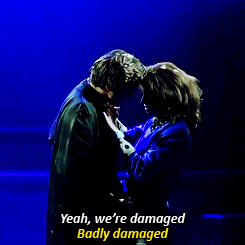Technical theater, referred to as “tech theater” for short, encompasses practically every aspect of a play’s production that does not directly involve the actors. This includes things such as set design and props, costumes and makeup, lighting, sound, and stage management. There are two sides to each of these aspects - the theoretical and the practical. The theoretical side deals with how each choice plays into the director’s vision or otherwise adds another symbolic layer to the production. On the other hand, the practical side deals with the physical, real world applications of these aspects.
One of the many roles technical theater contributes to is establishing the setting. The set design provides the audience with a representation of the world the play takes place in, with a varying level of abstraction, while costumes and makeup have to fit both the characters and the time period they live in. Lightning adds variation to the set and plays a large part in establishing the mood of the current scene, as well as which characters and elements are most significant. Sound, like lighting, serves to accent the setting, immersing the audience, and setting an atmosphere. When these aspects all work in harmony, they draw the viewers into the play - or, if the production is in a style more similar to someone like Brecht’s plays, serve to further highlight the falseness of the story. It all depends on what kind of tone you’re going for.
Every production is going to have different limits on it, such as the space, the budget, time, number of people participating, etc. These constraints will play directly into the practicalities of the show’s technical aspects. Obviously you can create a much grander and more detailed set for a play on Broadway than at a public high school (though there are certainly occasions where a more simplistic approach is preferable). Some shows will be able to create custom costumes for every role, tailoring them directly to the director’s vision, while smaller scale productions will have to rent their costumes and/or have the actors bring in whatever of their own possessions might prove useful to them or another character. The types of lights, and the number of each, are partially determined by the budget and the space. For an example, our black box theater does not have moving spotlights, which means that for a scene with a character pacing back and forth on stage, the lights have to be positioned in a specific way and changed at just the right time to keep the actor illuminated for the audience. When it comes to sound, any pre-recorded sound effects that the show requires will need to be found or created, saved, and then played at the right moment, at the right volume. If the sound effect is off time, too quiet to hear, or so loud that it overpowers critical dialogue, the whole scene can be ruined. All the actors’ audio levels have to be balanced, which becomes especially tricking if some of them share microphones and have to switch them out mid-show.






